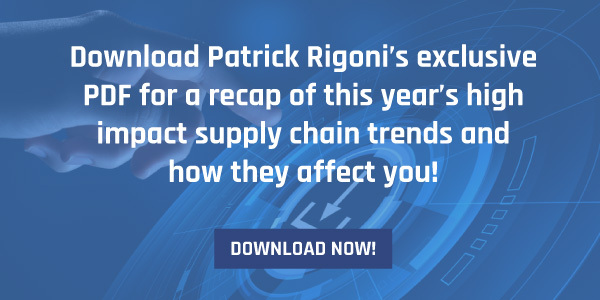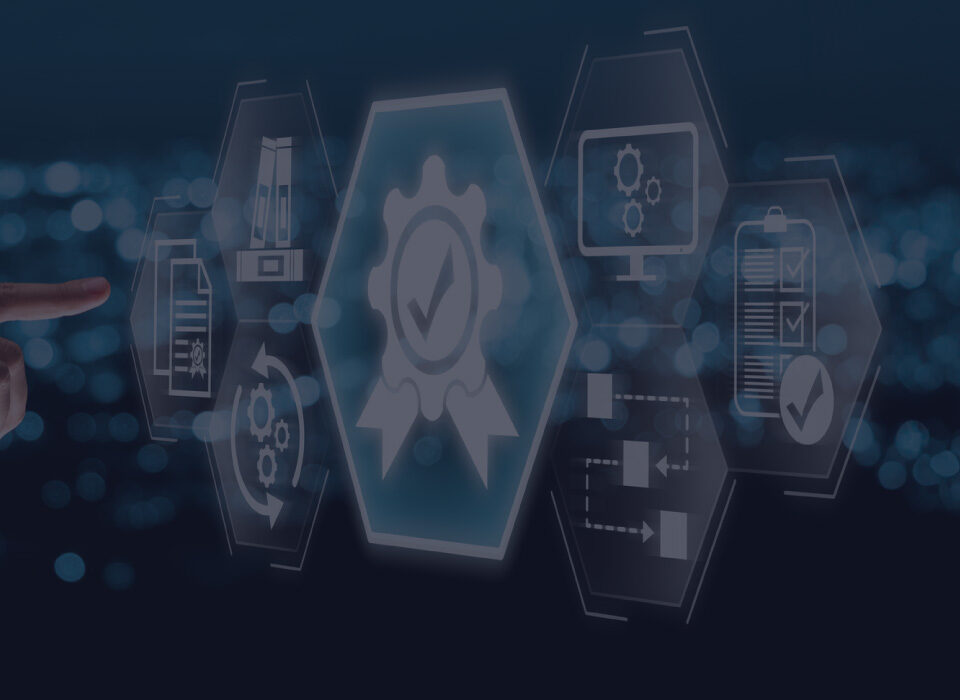
5 Strategies to Improve Supply Chain Sustainability
December 10, 2021
Q&A: Patrick Rigoni’s 2021 Supply Chain Recap
December 24, 2021With a new year just around the corner, it’s the perfect time to start setting intentions and making commitments with an eye towards the future. Prioritizing sustainability is high on the list of resolutions for many supply chain managers — and that’s not likely to change in the coming years. Social and environmental responsibility are more than a fad. Year after year, sustainability is weaving itself into the moral fabric of high-achieving companies the world over. Supply chain managers are being tasked with driving change across the industry.
Interacting with dozens of professionals in the field as a Demand Driven expert and educator, Patrick Rigoni has the opportunity to support these leaders as they put their sustainability plans into action. DDMRP is very well suited to this type of work, as it allows managers to build resilience, risk-tolerant supply chains. It’s also the perfect tool for problem-solving and identifying efficient, optimal solutions under pressure. The Demand Driven – sustainability connection is certain to only strengthen in the years ahead.
It’s undeniable: The future of sustainability in the supply chain field is bright. But what specific changes and trends can you expect to see in the next 5-10 years? While so much remains uncertain, a few patterns have emerged…
More Companies Will Join the Movement
Committing to – and following through on – sustainability initiatives is going to become the norm. We learned this during the COVID-19 pandemic. Despite ups and downs over the last nearly 2 (!) years, most companies have only increased their investment in social and environmental responsibility. MIT’s 2021 State of Supply Chain Sustainability report found that 80% of firms maintained or increased their commitments to SCS during the pandemic, while 83% credited the pandemic with increasing their knowledge of sustainability or driving them to adopt these practices on a faster timeline. While it should be noted that “very large” and “large” companies were most likely to push this trend forward during the pandemic, the expectation for smaller firms to get on board with the mission is expected to increase as well.
Pressure from Within and Without
The demand for supply chain managers to lead sustainability performance is only going to increase. Company executives are expected to place pressure on supply chain leaders to clean up their acts, mandating change. But findings from this year’s State of Supply Chain Sustainability suggest the pressure from the outside may be even greater. That means investors, international organizations, and the government may hold companies accountable for their behavior.
The 2021 report found that pressure from investors to boost sustainability practices grew by 8% in just the last year. Looking farther out, that number is expected to rise – and with it, demands for transparency and accountability. Disclosure of sustainability-oriented practices and performance will be the norm going forward, and company profits may be on the line.

Harnessing Data & IoT
Data-driven decision-making is at the heart of Demand Driven methodology, and it’s expected to influence supply chain sustainability in the future. With equipment sensors and cloud-based execution systems, companies can gather critical information in the moment, responding quickly to reduce waste and pinpointing opportunities for improvement.
Transparency and visibility have never been more readily accessible. Expect this to shift the way companies think about sustainability. Developing sustainable solutions and monitoring their progress is a breeze with data at your fingertips.
Social Responsibility & Climate Matter
Over the last year, firms have deepened their interest in some areas of sustainability in particular. The list includes human rights protection, worker safety, and renewable energy, according to the recent State of Supply Chain Sustainability report.
Gazing out towards the next decade, practices that champion social welfare and energy conservation are expected to garner support from internal and external stakeholders. Climate change will remain a focal point of sustainability initiatives, as companies strive to mitigate the effects of the supply chain on the planet’s limited resources.

A Circular Economy
It may sound idealistic, but the circular economy aims to slash waste and pollution out of the supply chain altogether. This design framework emphasizes products that can be reused or upcycled. Minimizing the supply chain’s “environmental footprint” is central to a circular economy. In the next 5-10 years, companies will invest greater resources into designing these types of systems. The next generation of supply chain managers are at the forefront of a tidal wave of change, and creative problem-solving skills will be coveted.
If you’d like to steer your supply chain toward a more sustainable future, get in touch with Patrick Rigoni to learn how Demand Driven practices can make it possible. While you’re at it, take advantage of his exclusive guide to supply chain trends. This premium resource is loaded with insight on what’s to come in the industry.
While you’re at it, check out Patrick Rigoni’s exclusive guide on the 10 most compelling trends in supply chain management – sustainability ranks high on the list!






